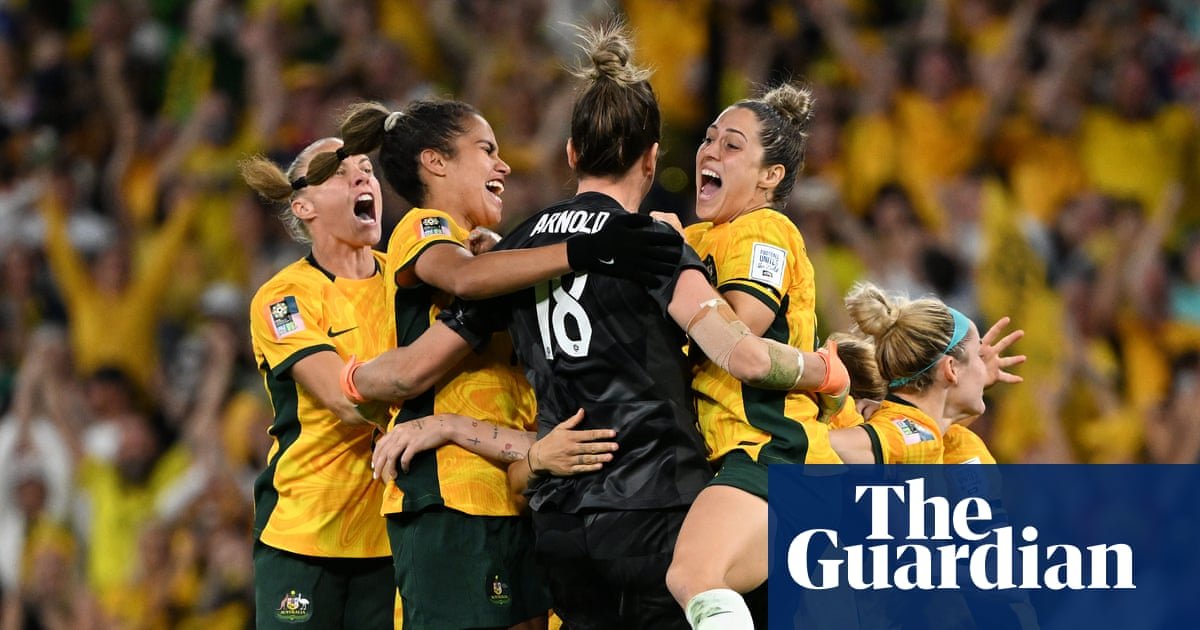Streaming has fragmented and transformed the once simple pastime of watching sport. Now the race is on to glue it back together
Sporting administrators and technology companies are in agreement: streaming has gone too far. Now, the race is on to glue the splintering parts of sports broadcasting back together.
“Aggregation” of services and rights is set to be the dominant trend in coming years, on smart TVs and in boardrooms of sporting organisations sympathetic to their keenest supporters.
From early radio broadcasts a century ago, through innovations of primetime World Series Cricket, the sights and sounds of sport in Australia have come a long away. But until the mid-1990s, a fan’s predicament was simple: the game was on, or it wasn’t.
Then came pay TV, and digital television’s proliferation of channels. Now, delivering sports coverage via the internet has delivered a plethora of new subscription services. No longer just free-to-air and Foxtel, but Kayo, Stan, Optus, Paramount+, beIN Sports, social media, teams’ and leagues’ own platforms, and likely more soon.
The trend has created confusion. Deloitte’s annual Media & Entertainment Consumer Insights research was released this month, and described today’s paradigm as the “media maze”.
“Consumers want a single place to manage their subscriptions,” said a Deloitte partner, Peter Corbett. “And an even greater sentiment – 73% of our respondents – said that they just wanted to be able to watch everything from one spot.”
Even as competition for eyeballs increases, sport remains compelling. Since April only two of the largest 20 programs streamed by the major broadcasters were non-sport programs, according to VOZ.
It’s why Amazon Prime – which had a deal with Swimming Australia until the end of last year – is expected to soon return to the local arena. It has picked up portions of high-profile sports rights in other key markets, such as the NFL in the US and tennis in the UK. Industry members expect the ICC’s next T20 and ODI World Cup rights to be a target too.
Yet the great land grab, marked by major rights acquisitions by the likes of Stan, Paramount+ and Optus, seems to be on the wane, as take-up of new services slows. “I think you’re hitting a plateauing in sport,” Corbett said.
Deloitte’s research found 61% of respondents said they had changed their sport subscriptions in 2022 but that number had declined to 46% in 2023. Corbett flagged that cancellations may increase in the coming year as household finances are squeezed but there’s no sign yet of major cutbacks by Australians. The effect? The division of rights across services appears set to stay.
Such an enduring problem has created opportunity. Major players including Foxtel are pursuing aggregation. In October Foxtel’s chief executive, Patrick Delany, described his company’s new service Hubbl as “TV and streaming made easy”. “Fusing free and paid TV beyond the apps, it will deliver a happier consumer, it will deliver stickier customers watching more,” he said.
The approach is not new. Google Chromecast and Amazon Fire have been improving integration of different streaming services for years. These moves to own the interface – be it by Foxtel, Google, Amazon or Apple – have prompted pushback. The government is now caught in a dispute between free-to-air broadcasters on one hand, and the likes of Foxtel on the other, as both seek “prominence” on connected TVs.
Such policy debates matter for sport fans. A Hubbl interface will almost certainly weight content from Kayo more heavily in its algorithm than that of its competitors. But the investment is likely to bring convenience, negating the need for endlessly switching apps.
Sign up to Australia Sport
Get a daily roundup of the latest sports news, features and comment from our Australian sports desk
after newsletter promotion
“You might already be a subscriber or maybe that aggregator helps bundle subscriptions, and gives you some value for doing so,” Corbett says. “So, to a certain extent, some of that pain might be taken away by that aggregator layer.”
Technology isn’t the only proposed pain relief. In football, the 2023 Women’s World Cup was screened across Channel Seven and Optus Sport, frustrating those who felt they should have had access to it all for free. The government has subsequently added the tournament to the anti-siphoning list, making it more likely Matildas matches at future tournaments will be screened by a free-to-air broadcaster. But it’s only a minor victory for football viewers, who, more than anyone, know the pain of splintered rights.
There’s Paramount+ for the A-Leagues, Stan for the European Champions League, Optus Sport for the Premier League and beIN Sports for the Bundesliga and Serie A. SBS On Demand offers Argentina v Brazil in the World Cup qualifiers, and soon the 2026 men’s World Cup, and Kayo offers ESPN FC.
“I think it’s made it hard for the fans,” Football Australia boss, James Johnson, says of the predicament. FA’s bundle of rights – including Socceroos and Matildas friendlies and matches in Asian competitions, as well as the local Australia Cup and the upcoming national second division – is now on the market.
But this year, buoyed up by the performance of the Matildas at the World Cup, FA has partnered with IMG and bought the rights to the 2027 women’s showpiece, to be included in the bundle, as Johnson pursues what he believes will deliver a “record” return.
“When you’re acquiring rights, there’s always a degree of risk, but the risk is managed, it’s calculated,” he says. “But I think the more we can aggregate rights within Australia but also football rights outside of Australia together, I think the better it is for the sport, but most importantly, the fans.”
Bids for the Matildas and Socceroos rights close in December. The government’s reforms around anti-siphoning and prominence are expected by the end of the year. Hubbl launches in coming months. The future of watching sport? Still buffering.
source
